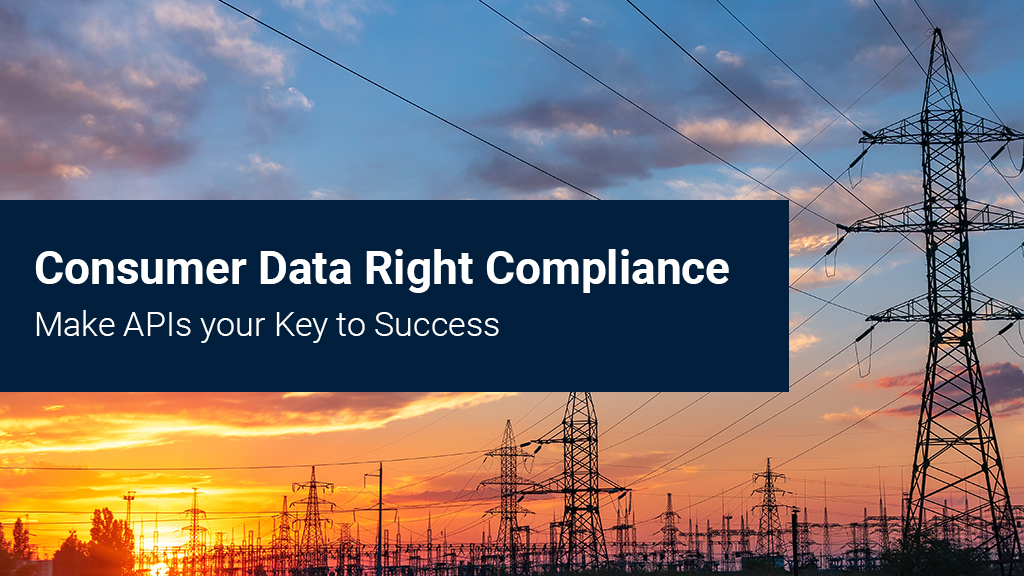6 key takeaways APIs can provide in the wake of the Consumer Data Right reform
Why the CDR should be beneficial for both consumer and company alike.

The new Australian-New Zealand law, the Consumer Data Right (CDR), was recently passed to great acclaim: protecting consumer data and giving those consumers more control over it. This should motivate energy companies to adopt technologies that would allow that open data integration with some added perks, like heightened product commoditization, more tailored customer services and a more integrated consumer environment.
Yet some companies fail to comply due to a lack of initiative in making the transformation to digital integration. What happens when energy companies don’t comply with this new mandate as stipulated by the segment of the CDR under the Consumer Data Right (Energy Sector) Designation 2020? Administrative resolutions, infringement notices and fines. If that doesn’t sway energy companies, legal action ensues, resulting in suspension, revocation of accreditation, civil penalties and disqualification of individuals from being directors of corporations.
Clearly the issue is serious if many companies struggle with CDR compliance. And not just due to penalty, but due to missing out on the new opportunity for additional growth and perks some institutions in the banking industry currently experience.
Enter: APIs and API management.
How companies can easily comply with the new law via APIs
Data connectivity is the bread and butter of APIs. Since the CDR expects account, customer, billing, metering, product and plan data to be seamlessly and openly connected – webMethods API Management, integration, governance, security, metrics and privacy tools are a must just to comply with an open data initiative like the CDR for good reason. As data becomes more open and accessible, so does the need to protect it with these tools. A staple of API Management, of course, is security, a requirement via the API Gateway that would satisfy a CDR stipulation known as the ADR authorization (accredited data recipient).
This ensures all data is protected as it freely flows from system to system – a reassurance for companies struggling to be confident in complying with the CDR. Upon seeing all the other benefits of management of APIs – such as implementation of an API developer portal, data monetization and even hackathons to create more innovative products and services – it’s clear that CDR compliance not only can be fulfilled via APIs and their management, but should be. And not just as a one-off solution.
Let’s turn our attention now to the six takeaways resulting from implementing APIs and managing them in an ecosystem designed to comply with the CDR.
Real-time interaction with the Primary Market Gateway
While the point of APIs and their management to comply with CDR is simply about connecting data in real time for customers, the fact remains that APIs and their management also allows energy companies that same connectivity with the AEMO (Australian Energy Market Operator) hub using B2B/EBXML standards. An enterprise-grade integration platform, in fact, can manage this with ease while interacting with SAP and Network Management Systems of the advanced metering infrastructure. The result? More efficiency in providing lower cost for customers, accessing more competitive bids.
Real-time integration within the electrical utility organization
Internal SAP systems, the market hub and partners: if all of these could be integrated with SAP as the core back end, millions of transactions could easily stream in and out without issue. This could include vital information, such as:
- Addresses
- Meters
- Meter types
- Solar-panel/non-solar-panel tariffs
Having all that data allows the energy company full control of fulfilling current and possible future regulatory requirements. Remote access to meters and stations would be a breeze. The need for manual monitoring and intervention would drastically drop.
Launching of new sustainability projects
Consumer empowerment is on the rise in the energy sector for a reason. If APIs can show customers not only how much energy they’re consuming, but how they can cut those costs via IoT device implementation, that’s a dual game changer. AC units could tap into the cloud, sending volumes of IoT data, such as voltage and temperature information that would allow sustainable self-regulation, cutting energy usage, contributing to the environment, but also reducing cost for the customer. Managing these sustainability initiatives can even help prevent outages before they occur via predictive algorithms.
Enrollment and billing automation
Offering more accurate energy prices based on energy usage data and locking them in with an automated billing system allows retailers to not only forecast cost, storage requirements and services, but provide consistency in those prices even during fluctuations that often occur. Over time, this can reduce government funding, maximizing profits.
Health and safety requirements
One major retailer for Australia and New Zealand found that managing APIs benefited monitoring situations in and out of control rooms. In the energy sector, safety is a primary directive. This goes in line with power outages as well. With data integration, coupled with IoT, key detection points can spot anomalies and even field crew driver behaviors in real time via handheld devices, allowing for escalations and fail-safes to guide 3rd-party contractors on site.
Network design optimization
Managing an entire energy infrastructure design often leads to admin task guesswork on where to proceed. Manual information and data gathering can be time consuming. But with API management integrating data from all other systems, providing recommendations on guidance and course of action, designers can then focus on actual design to further optimize infrastructures.
Confidence with CDR compliance, positivity in the energy market
With the right solution in place – webMethods, approaching compliance with an API-first model, featuring the only multifunction iPaaS for integration, API management, B2B integration, microservices and IoT connectivity – managing compliance with the CDR wouldn’t simply be an inevitability. It would be the catalyst to something better for the future. Sustainability. Greater efficiency. Lower costs for consumers. Increased services, features and benefits.
Want to learn more?
This post was written by Shikha Agarwal and Jason Letchmanan.